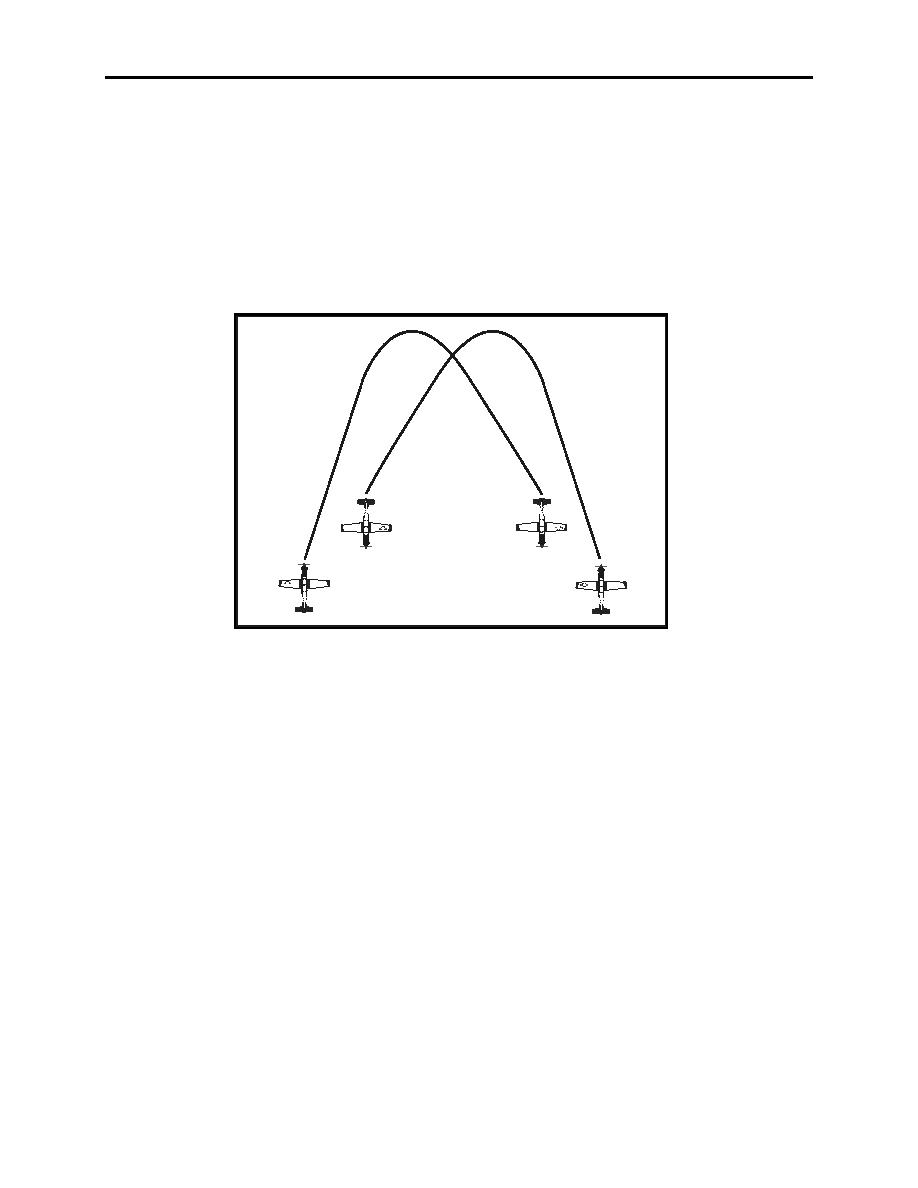 |
|||
|
|
|||
|
|
|||
| ||||||||||
|
|  CHAPTER FOUR
T-6A FORMATION
1.
Cross turns are initiated by the Lead calling "(Tactical Call sign), cross turn Lead low".
When the Wingman responds "Two," Lead will initiate a 180 standard tactical turn into the
Wingman. The Wingman will immediately execute a rolling pull up to approximately 10 nose
high to obtain 500 feet of vertical separation, after crossing over Lead, the Wingman will
descend to the previous altitude as he completes the remainder of the turn.
2. Both aircrafts' students will check old six for the first half of the turn and new six for the
last half to accomplish visual lookout. These calls are made over the ICS to the instructor (i.e.
"Old six clear" or "New six clear").
CLIMB
LEAD
WING
Figure 4-19 Cross Turn
415. LEAD CHANGE
The lead change is a maneuver designed to effect a change of the formation lead with the least
possible effect on flight integrity. Prior to passing the lead change signal, the Lead aircrew will
ensure the flight will remain clear of other aircraft, weather, and stay in the working area (if
established in a working area). Lead changes may be done visually or over the radio and from
any formation with the correct coordination.
1.
The Lead. For a visual lead change the Lead crew will start the maneuver with a "push
them forward" signal (Figure 4-20). Once the Wingman has moved out a bit and forward, the
Lead pilot will turn toward the Wingman and give the lead change signal. To pass the lead, the
Lead pilot will pat the front of his helmet three times, then point and look directly at the
Wingman. This signal will be timed so that it is given just as the Wingman passes abeam Lead.
If the Wingman is not prepared to assume the lead, he will immediately reply with the "negative"
shake of the head. The Lead will then clear the area, give the Wingman a chance to stabilize and
then attempt to pass the lead again. After the Lead has passed the lead (visual signal), the old
Lead will not shift his view from the new Lead unless the lead change is refused. For a radio
lead change, the Lead aircraft will simply make the following radio call:
4-22 SECTION PARADE
|
|
Privacy Statement - Press Release - Copyright Information. - Contact Us |